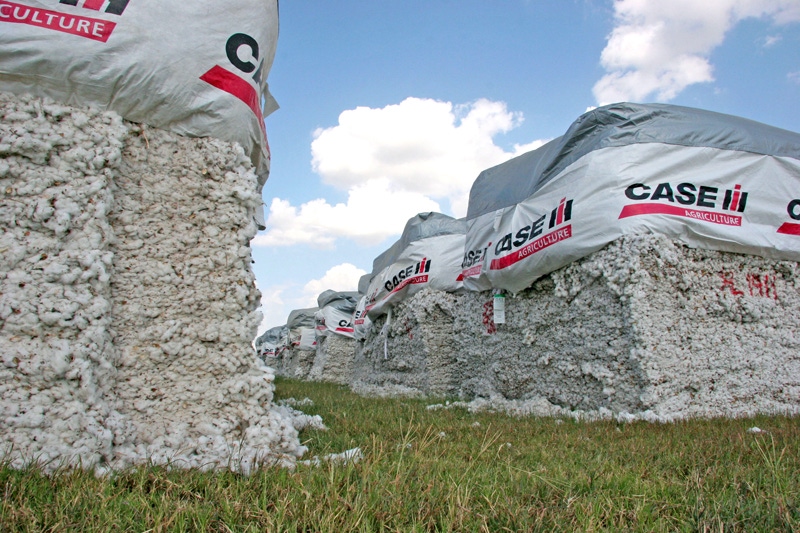
Falling cotton prices have uncovered a considerable amount of cotton demand, both in the United States and around the world.China continues to stockpile cotton, which also increases export demand.Again, all eyes will be on Texas acreage this spring, as moisture levels are still questionable in many areas.

U.S. cotton acreage will probably fall short of USDA’s projected 13.15 million acres, but exports could be higher than projected on increases in world demand and continued stockpiling of cotton by the Chinese, according to analysts speaking at the Ag Market Network’s March teleconference.
“A lot of things have happened since March 1,” when the surveys for USDA’s March 30 Prospective Plantings report were taken, said O.A. Cleveland, professor emeritus, Mississippi State University.
This includes more U.S. cotton producers shifting to corn. “We’ve had very good moisture through the Southeast and Mid-South,” Cleveland said. “We’re getting past the planting dates for corn, but with the moisture we’ve had this last week, some producers will get back in the fields to plant more corn. That will take some more of this cotton acreage out.”
Cleveland added that producers “who can plant either cotton or soybeans are starting to get serious about soybeans because prices compared to cotton are dramatically high.”
Meanwhile cotton demand “has been creeping higher,” noted Cleveland. “You could argue that USDA needs to increase U.S. exports by about a million bales. I don’t think that will happen, but they could increase them 500,000 bales, from 11 million to 11.5 million bales. We’re seeing better demand here in the United States, and we’re seeing better demand worldwide. With the market coming down, we’ve uncovered a considerable amount of cotton demand, and we’ve disappeared some cotton because of that.”
Cleveland noted that with Indian cotton exports (India ban) on hold “U.S. cotton has become the cotton of choice, price wise and quality wise, and we don’t have that much cotton left that we can sell. Longer term with this crop, I’m still bullish.”
“As of right now, we’ve already sold 8 percent to 9 percent more than what USDA said we were going to sell for the entire season,” cotton analyst Mike Stevens said of cotton exports. “The only thing that has been hanging over this market are potential cancellations that could hurt these numbers.”
Stevens believes the U.S. cotton market “could be in a tight situation by the end of the season. However, there is still a lot of time left, and a lot of things still pending.”
Texas A&M Extension economist John Robinson said that Chinese stockpiling of cotton is also a consideration for export demand. “USDA showed in its (March 30) report a 1.5 million bale increase in Chinese imports, and yet there was a 500,000 bale cut in projected Chinese mill use. They are acquiring lots of cotton, but their month-on-month use of cotton is declining. How bearish you view that is how you interpret the status of the Chinese stockpiles which now comprise a third of the world’s projected ending stocks.”
As usual, all eyes will be on the Texas cotton crop this spring. USDA projected Texas cotton acres at 6.8 million acres for this season, down from last year’s 7.55 million acres. Robinson said a large part of projected Texas acres is in the South Plains, “which is still in the throes of drought conditions, on the surface and sub-surface.”
Good surface moisture exists in the Texas Coastal Bend and the Rolling Plains, according to Robinson “but down below there is very little sub-surface moisture so yields are a big question. There is going to be a lot of production and supply uncertainty hanging over us until we get some good estimates in August and September. So we still have that weather market.”
Pat McClatchy, executive director of the Ag Market Network noted that recent rallies in the cotton market have primarily been due to tightness in old crop cotton and India’s actions to discontinue exports. “I think it’s safe to say that the world looks at India as though it’s not a reliable partner anymore. The United States is the beneficiary of that, but it’s putting more pressure on our tight situation.”
This adds buoyancy to cotton prices, according to Stevens. “July futures can trade at a dollar. I’m not saying it should, but technically, there is a really good chart pattern out there right now.”
On whether higher July futures could push December higher, “it could drag it up, maybe to 95 cents,” Stevens said.
“If we do get this squeeze to continue in July, and it takes December higher, this could be a phenomenal opportunity to do some marketing,” McClatchy said. “Be diligent in watching not only December, but old crop.”
Stevens sees an 80 cent downside on December cotton, and an upside of 95 cents. Robinson sees the range at 75 cents to 95 cents. Cleveland projects December as low as 85 cents to as high as $1.02. Texas A&M Extension professor emeritus Carl Anderson projects a range of 70 cents to 98 cents.
Bearish U.S. news in the WASDE report included a 100,000 bale cut in domestic mill use, which added 100,000 bales to U.S. ending stocks, which rose to 3.9 million bales and a 27 percent stocks-to-use ratio.
About the Author(s)
You May Also Like





